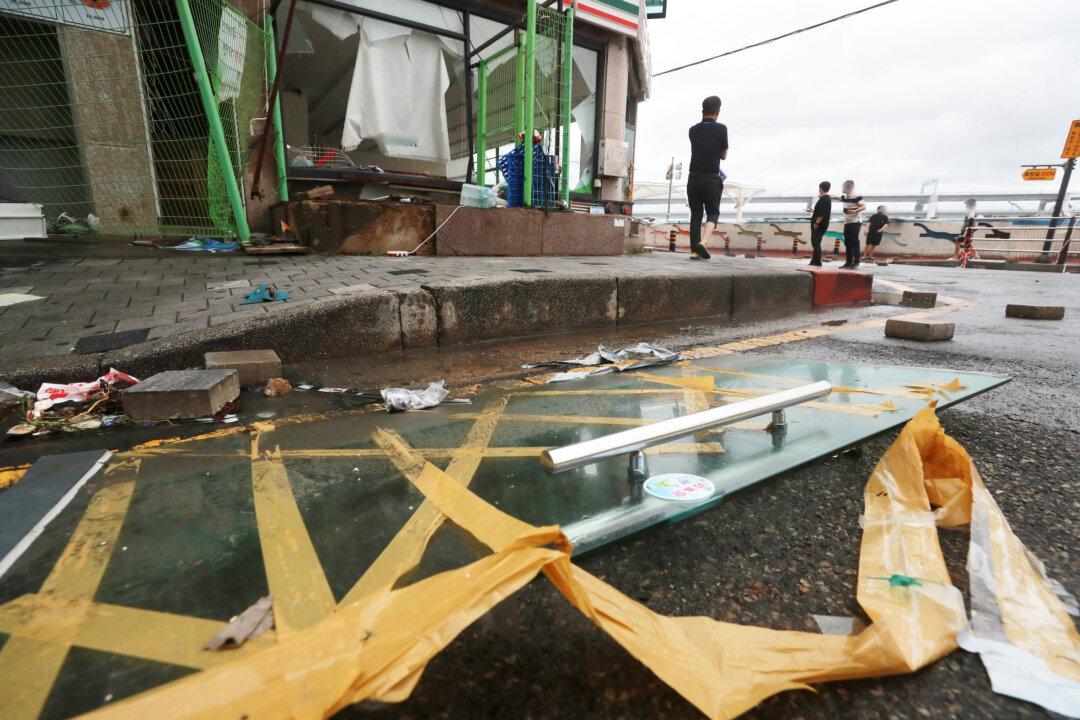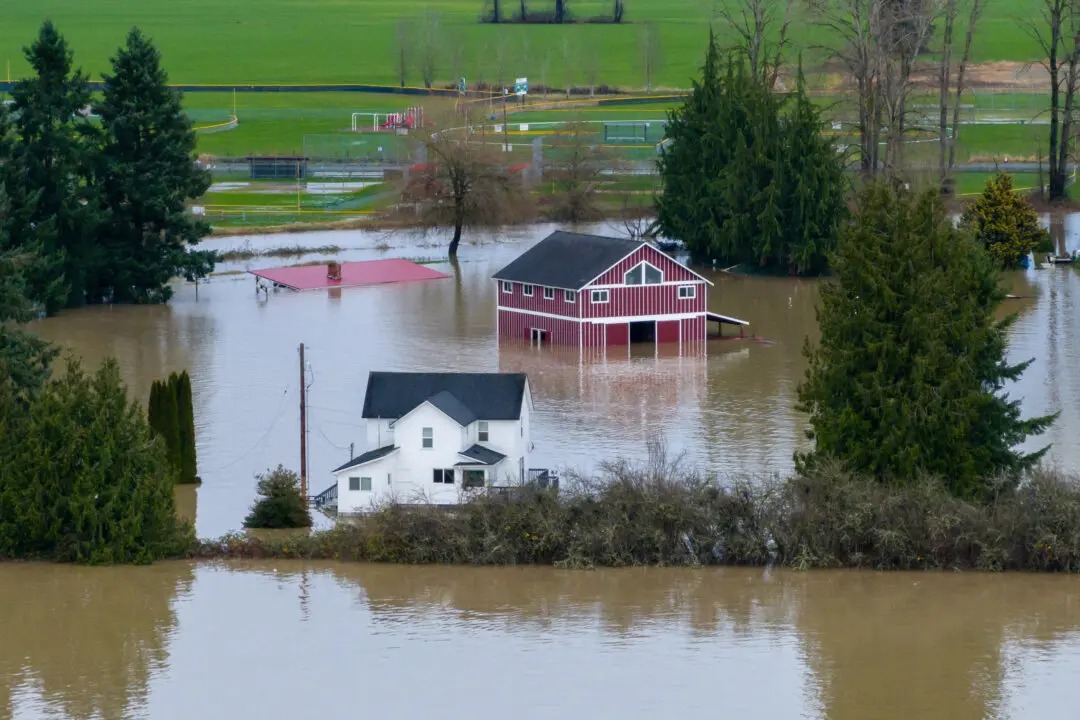SEOUL, South Korea—The most powerful typhoon to hit South Korea in years battered its southern region Tuesday, dumping a meter (3 feet) of rain, destroying roads and felling power lines, leaving tens of thousands of homes without electricity before weakening at sea. Two people died, and some of the missing were stuck in a submerged basement parking lot.
Typhoon Hinnamnor grazed the resort island of Jeju and hit the mainland near the port city of Busan before blowing into the waters between the Korean Peninsula and Japan.





